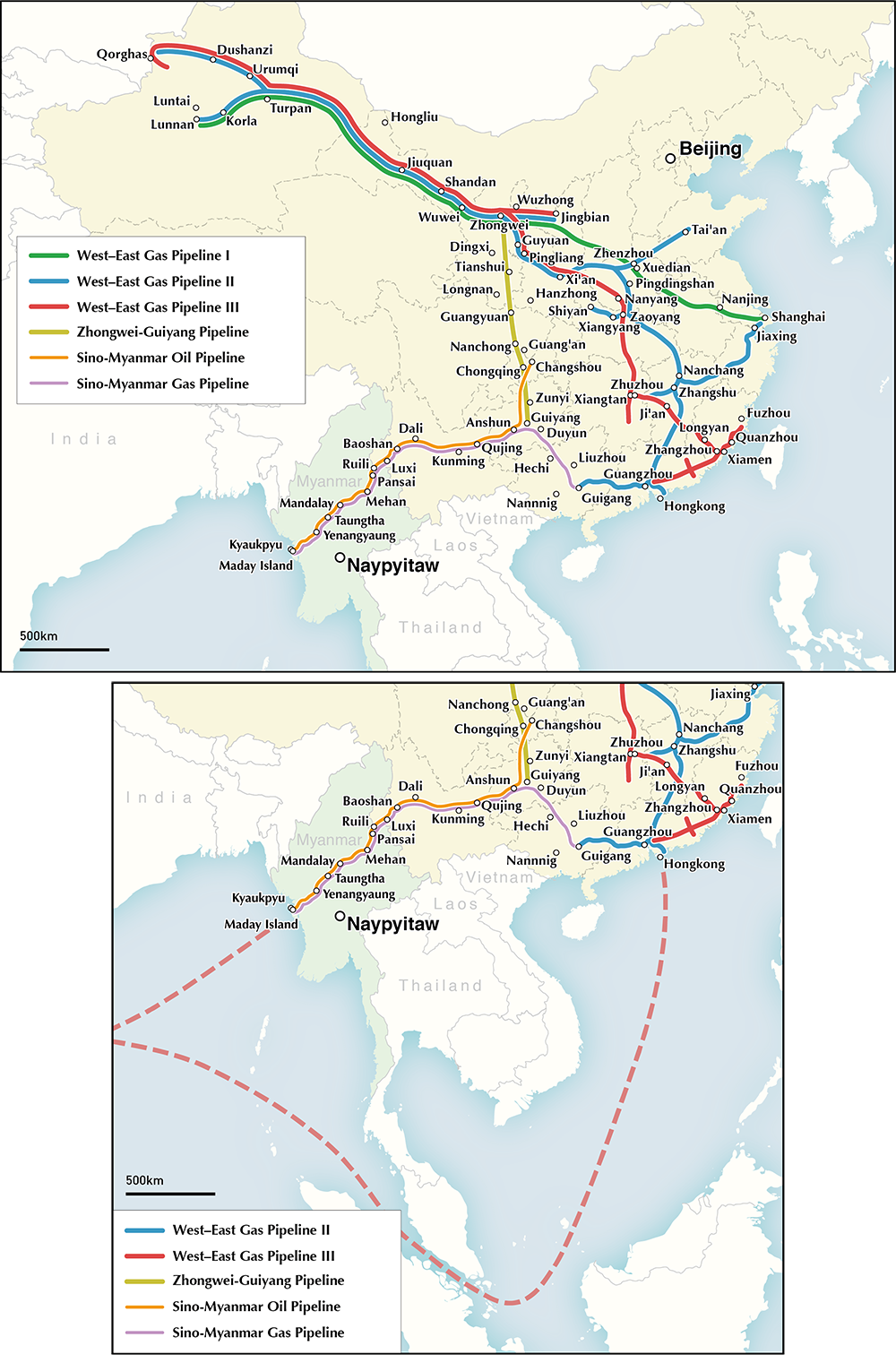Examining the Construction of the China-Myanmar Petroleum and Natural Gas Pipeline: Domestic Policy Process and International Energy Procurement
This is a summary of the report "Examining the Construction of the China-Myanmar Petroleum and Natural Gas Pipeline: Domestic Policy Process and International Energy Procurement"(by Liu Dawei and Yamaguchi Kensuke), which was published on Ajiken World Trends, No.241, November. 2015: 35-42 (in Japanese).
Summary
This report aims to understand the policy processes regarding the recent development of China-Myanmar oil and natural gas pipelines, which were initially motivated in the context of the Chinese national energy security enhancement by reducing its dependence on the critical sea-lane in the Strait of Malacca (See the figure below). In section 1 we reveals considerations of relevant parties in the construction of the pipelines, taking into account of strategies of not only Chinese central government, but also regional governments and state-owned oil companies. The paper contends that the role that state-owned oil companies and regional governments near procurement sites play in policymaking processes becomes even more important as China accelerates its energy procurement in recent years.

Figure: Critical Sea-lane and Oil & Gas Pipeline
(Designed by Kenjiro Totsuji)
Section 2 summarizes the negotiations and construction processes of pipeline through the lens of summit diplomacy. As is widely known, China has been strengthening its foreign aid since the 1990s in the aim of securing strategic resources such as oil and natural gas, just as Japan has done since the 1970s. While Myanmar government was awash in criticism and being sanctioned by the West, Chinese government succeeded in building a close relationship with Myanmar’s military regime by providing continual support. With this relationship of political trust in place, large Chinese investment projects including the pipeline were approved in succession.
Section 3 examines some reflections and opposing viewpoints on the pipeline project and even China’s investment strategies. First, some opponents consider the construction of pipeline is not cost-effective, namely, although the possibility of threats to oil transportation passing through the Strait of Malacca indeed exists, the necessity of pouring billions of dollars into constructing pipelines has been doubted. Additionally, if conflicts large enough to threaten freedom of navigation, Myanmar-China pipeline would also become a target for attacks. Secondly, difficulties of operating the pipeline safely and normally have also been pointed out in view of the sophisticated political situations in Myanmar. Thirdly, so far China have relied on summit diplomacy too heavily so as to neglect communicating with local fighters and ordinary people. Partly due to this Chinese enterprises prefer to stress short term interests, e.g., securing resources while overlooking environment protection and poverty alleviation.
In view of these questions, section 4 analyzes some adjustments of China. First, Chinese companies are now encouraged to adjust their investment strategies to combine local poverty alleviation and social development plan. Secondly, Chinese government is approaching Myanmar’s democratic factions to gain support for its investments. Furthermore, aside from interactions at the government level, the Chinese government is promoting interaction with civilian organizations in Myanmar, i.e., using methods such as tourism and study abroad to actively connect with all sides of Myanmar. These adjustments are able to alleviate the pressure to Chinese projects coming from political opponents and Myanmar society.


